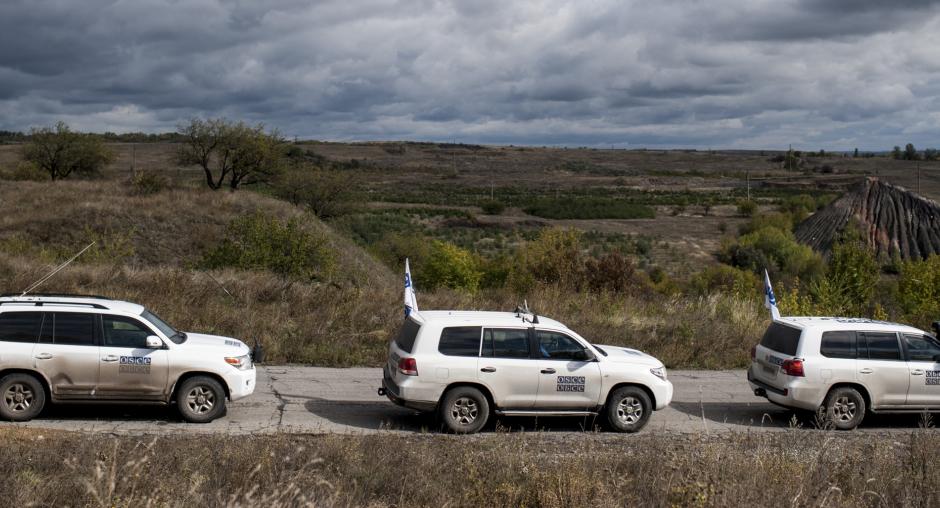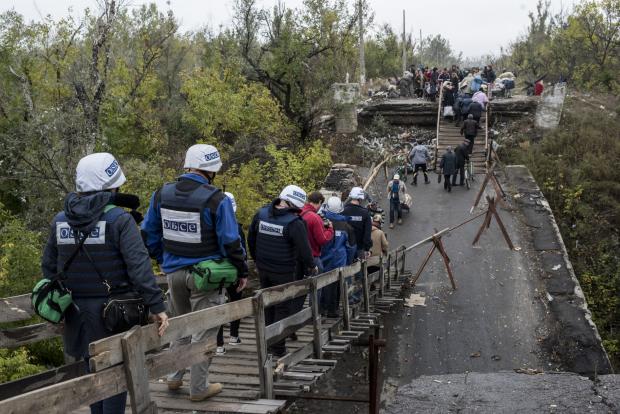Disengagement: OSCE is monitoring how sides in eastern Ukraine deliver on agreement
On 21 September 2016, the participants of the Trilateral Contact Group committed in Minsk to an agreement on “disengagement” which Ertugrul Apakan, the Chief Monitor of the OSCE Special Monitoring Mission to Ukraine (SMM), said would go some way “to alleviate the situation for civilians who continue to pay the price for the ceasefire violations.”
The Framework Decision relating to disengagement of forces and hardware by Ukrainian armed forces and armed formations, starting in Petrivske, Zolote and Stanytsia Luhanska areas, was signed by the Special Representative of the OSCE Chairperson-in-Office in Ukraine, representatives of the Governments of Ukraine and the Russian Federation to the Trilateral Contact Group, and initialled by representatives of certain areas of Donetsk and Luhansk regions.
What is disengagement?
As specified in the Decision, disengagement will be carried out through a withdrawal of armed forces/formations and hardware from their current positions, starting in three areas, with a view to creating disengagement areas that will be, as a rule, at least 2km wide and 2km deep. Moving forward into disengagement areas is prohibited.
The role of OSCE SMM monitors
The signatories of this decision have entrusted the role of monitoring and verification to the SMM, which it will perform as part of its mandate assigned to it by the OSCE’s 57 participating States.
The sides are required to provide baseline information on the locations of armed forces/formations and hardware in the area to the OSCE SMM prior to disengagement, as well as information on the proposed destinations of these elements upon completion of disengagement. Once the disengagement is completed, the sides should notify the SMM of the completion of disengagement within no more than 24 hours once it has been completed in the agreed area.









